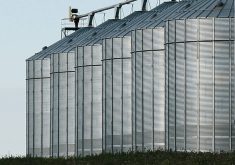The heated debate over bees and insecticides has reached a new threshold.
This morning at a news conference in Toronto, Ontario’s environmental commissioner said neonicotinoids are more hazardous to the environment than DDT.
“All the science is not done, but everything that I have before me … suggests to me as an ecologist that this is the biggest threat to the structure and ecological integrity of the ecosystem that I have encountered in my life,” said Gord Miller, who has worked in environmental protection for 37 years.
Read Also

Grain trader Bunge lowers 2025 profit forecast after closing Viterra deal
U.S. grain trader and processor Bunge on Wednesday lowered its 2025 earnings forecast following its merger with Viterra, and said it is overhauling segment and volume reporting to align with its integrated operations.
“(It’s) bigger than DDT.”
Miller’s comments on neonics were based on the contents of the Environmental Commissioner of Ontario’s annual report, released earlier today.
Ontario environment minister Glen Murray echoed Miller’s DDT comparison. He told the Ontario media that neonics are more toxic than DDT.
Neonics, which are applied as a seed treatment to almost all of the corn and canola in North America and most of the soybeans, have been linked to bee colony losses across North America. In September, beekeepers in Ontario filed a $450 million class action suit against neonicotinoid manufacturers Syngenta and Bayer, claiming production losses dating back to 2006.
University of Saskatchewan research suggests neonics are present at detectable levels in sloughs and wetlands in Western Canada. The neonics are possibly killing insects that come in contact with the water. A lack of insects reduces the food supply for birds and animals that rely on the insects.
Keith Solomon, a University of Guelph toxicologist, said earlier this year that the neonic-DDT comparison is incorrect.
“In no way is it (comparable). DDT was very persistent. It was metabolized into a metabolite called DDE that was even more persistent,” said Solomon, professor emeritus in the U of G’s School of Environmental Sciences who has a global reputation for his pesticide expertise.
“And it also bio-magnified through the food chain. It (DDT) dissolved very easily in fat and moved up through the food chain. All of that led to issues, at least in birds.”
Solomon said neonic insecticides don’t bio-accumulate in species and don’t move up the food chain.
“They don’t have those properties and they’re nowhere near as persistent as DDT.”
Miller said the environmental threat from neonics is distinct from DDT, which built up in birds and compromised the health of raptors.
“This (neonics) is much more broad spectrum. It’s an aqueous soluble, which means it moves in the water system. It moves through the soil and into the streams.”
Miller added there is little evidence that neonic seed treatments increase crop yields. Farmers would be better off if they adopted integrated pest management.
“In my report I have examples of three farmers in Ontario that use a low impact, more sustainable approach to managing soil … that really does give you, in fact, almost double the yield of the average corn yield in Ontario,” he said.
“It (integrated pest management) uses all the tools available, crop rotation and monitoring.… You only use pesticides in integrated pest management when … (they) insects are getting out of control.”















